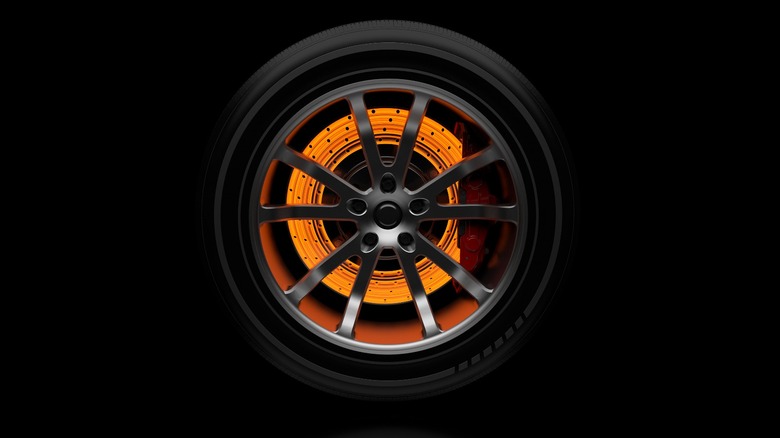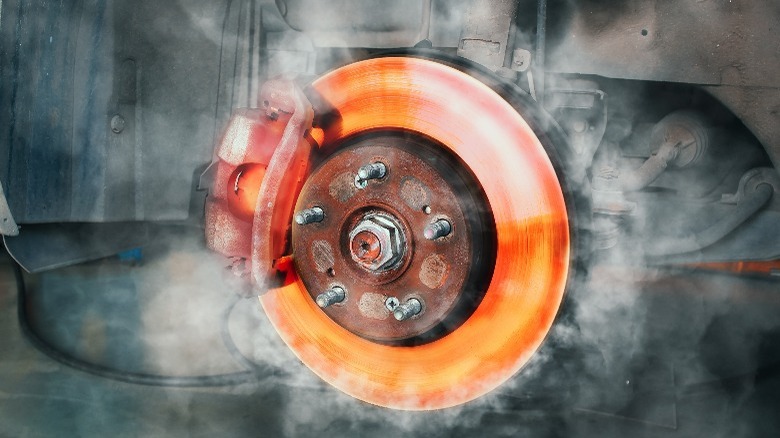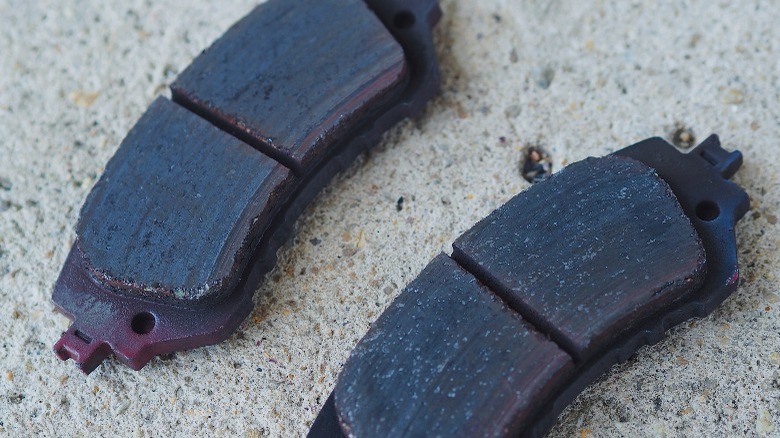What Is Brake Fade And What Causes It?
Have you ever pressed the brake pedal in your car and felt as if it's no longer as responsive as you know it should be? Let's say you're going down a mountain pass, and you realize your car is now taking noticeably longer to stop each time you hit the brakes. This phenomenon is typically called brake fade, and the science behind it is relatively simple.
Cars stop by changing kinetic energy into heat. Modern cars use a system of brake disc rotors, calipers, and brake pads to create friction and stop a car. When you press the brake pedal, a hydraulic system utilizes pressure to force the calipers to squeeze the brake pads onto the rotors and stop the car through friction.
In turn, friction creates ratber a lot of heat. Brake discs typically don't get over 400 degrees Fahrenheit in normal street driving. However, spirited driving, like driving on a track or driving with more load, can stress your brakes much more and not give them enough time to cool. This can force to temperatures to rise to around 1,000 degrees Fahrenheit. This heat can then cause a loss of brake performance, which could be dangerous.
What are the types of brake fade?
The most common type of brake fade is when your brakes lose effectiveness because a layer of gas prevents the brake pads from properly gripping the rotors. This gas comes from a breakdown of the brake pads' materials — primarily resin. As the resin deteriorates, it releases a gas that could film the rotor and reduce contact. That's why some brake pads have slots that allow the gas to escape. Consider replacing your brake pads yourself if you notice that the ones mounted on your vehicle don't have slots.
There's also another type of brake fade called fluid fade. Remember how we mentioned earlier that cars use a hydraulic system to activate the brake calipers? Well, that fluid in the hydraulics can boil and reduce the effectiveness of that system. Because brake fluid is hygroscopic, it's designed to absorb water and moisture, reducing its boiling point and increasing the likelihood of brake fade.
Lastly, braking power is lost when you drive in wet or humid conditions. This can snowball into what some refer to as "water fade," which is essentially another type of brake fade. Here, water could seep between the pads and the rotors, get trapped, and reduce the grip between the two surfaces.
How do you avoid brake fade?
The first and most obvious piece of advice to avoid brake fade is to avoid stressing your brakes in the first place. How you choose to implement this advice will depend on how you stress your brakes. For example, if you notice brake fade when going downhill, then consider using engine braking instead of relying heavily on your brakes. Likewise, avoid aggressive driving with plenty of quick acceleration and sharp stopping that could lead to heat buildup.
As we said earlier, brake pads with slots can help dissipate the gasses. However, vented, slotted, and drilled brake rotors can also be used similarly. They allow air and gasses to come in and escape through the vents, keeping the brakes cooler. Also, if you want to use your car for its performance, like on the track or for towing, consider getting bigger rotors because the larger surface area can help vent away heat. You should change your rotors at around 50,000 to 70,000 miles, anyway, so this can be a good opportunity to change to performance rotors.
While going about your car's maintenance, you should also check to ensure you don't have old brake fluid that may have absorbed a lot of moisture. How often you should change your brake fluid varies according to your vehicle, but you should generally do so every two to four years.


